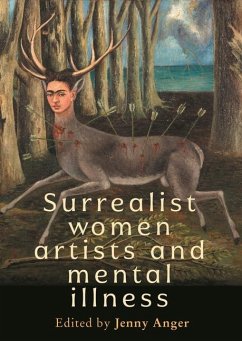Surrealists idealised feminine madness for its supposedly unfettered access to the unconscious. At the same time, a significant number of surrealist women artists experienced mental illness. Indeed, Leonora Carrington, Frida Kahlo, Meret Oppenheim, Sonja Sekula, and Unica Zürn, among others, all suffered from maladies ranging from depression to schizophrenia--and all found their way into the surrealist movement. It was an uncomfortable fit. Carrington was hospitalized due to psychosis, Kahlo is believed to have had post-traumatic stress disorder (PTSD), Oppenheim struggled with depression, and Sekula's and Zürn's schizophrenia affected their art processes and products. How did these experiences and their work intersect with surrealism's romanticised vision of feminine madness? Did these women--and others--see themselves in that ideal? Surrealist scholar Katharine Conley observes that the surrealist woman had 'a potential for shock and consequently for reversal--the potential to step down from her pedestal and to create on her own.' How true was that observation for the surrealist woman with the added burden of mental illness, which complicates all aspects of life? Did these women find the masculine, surrealist dream of feminised, mad genius prohibitive--or productive? This study explores how the work of these women pushed surrealism far beyond its mere idealisation of feminine madness--and how actual feminine mental illness expanded and deepened surrealist art. 'It is encouraging to finally see a serious study on women Surrealist artists and mental health and illness, an intersection overdue for scholarly exploration. A triumph and an absolute necessity' Amanda Cachia, University of Houston
Bitte wählen Sie Ihr Anliegen aus.
Rechnungen
Retourenschein anfordern
Bestellstatus
Storno








